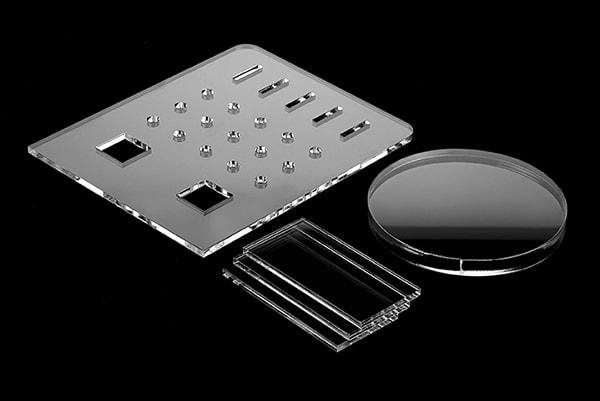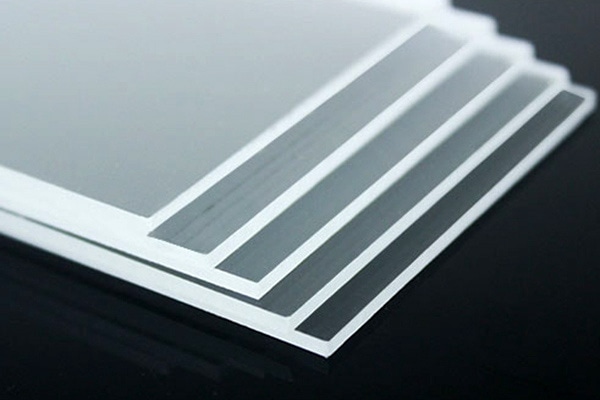PMMA (Polymethyl Methacrylate) Market is expected to reach USD 6.4 billion by 2028, according to industry estimates.

Market for Polymethyl Methacrylate (PMMA) by Type (Pellets, Beads, and Extruded Sheets), by Application (Signs & Displays, Lighting Fixtures, Automotive, Construction, Sanitary Ware, Electronics, and Others), by Grade (General Purpose, Optical), by Region, Global Industry Analysis, Market Size, Share, Growth, Trends, and Forecast 2021-2028
Newark, New Jersey, May 25, 2021 (GLOBE NEWSWIRE) -- The City of Newark, in partnership with the New Jersey Department of Transportation, is launching a new public transportation system. Global polymethyl methacrylate market is expected to grow from USD 4.9 billion in 2020 to USD 6.4 billion by 2028, growing at a compound annual growth rate (CAGR) of 3.5% during the forecast period of 2021-2028, according to a report published by Fior Markets in January 2019.
Recent years have seen a significant increase in the demand for Polymethyl Methacrylate (PMMA). Growing demand for LED flat screens and optoelectronics, as well as investments in bio-based polymethyl methacrylate, as well as increased awareness of the advantages and capabilities of PMMA as a substitute for glass and heavy-weight materials, are all contributing to this increase in the global market. Aside from that, the market for PMMA will grow as a result of an increase in innovative applications, modernization, and technological advancements in the manufacturing techniques. The government's mandate to use environmentally friendly polymers is causing polymethyl methacrylate to grow even more rapidly.
It is also known as acrylic glass because it is made of polymethyl methacrylate (also known as PMMA). PMMA is a synthetic resin and a thermoplastic polymer of methyl methacrylate that is also known as acrylic glass. The polymerization process is responsible for its production. In the form of beads, sheets, pallets, and blocks, PMMA is a transparent thermoplastic that is widely used. Heavier-weight materials and glass are substituted for it. Because of its rigid, clear, and lightweight properties, it is commonly used in skylights, illuminated signs, aircraft canopies, and shatterproof windows. The light weight and transparency of this material allow it to be used in a variety of applications including signs and displays, electrical and electronics, automotive and transportation, as well as building and constructions.
Global polymethyl methacrylate market is expected to grow significantly in the coming years, driven by rising government regulations that encourage the use of sustainable polymers as an alternative to glass and polycarbonate, rising demand from the automotive and transportation sectors, rising consumer awareness of the benefits and capabilities offered by PMMA, as well as increasing demand from industrial end-users. High production costs, a scarcity of raw materials, and a decline in demand in the automobile industry are among the factors limiting the market's growth.
The clear acrylic sheet is an affordable plastic sheet with a polished or frosted surface. The widths range from 0.8mm to 50mm, the common dimensions are 1220*2440mm (4*8ft) and 2000*3000mm. Clear plexiglass provides great processing and may be cut, bonded, thermoformed, and printed easily. It is widely utilized for home design, industrial applications, electronics, POP displays, packaging, building, etc.

Asahi Kasei Corporation, Arkema Group, Evonik Industries AG, Chi Mei Corporation, Kolon Industries, Inc., GEHR Plastics, Inc., Mitsubishi Rayon Co., Ltd., Sumitomo Chemical Co., Ltd., Polycasa N. V., Saudi Arabia Basic Industries Corporation, Quinn Plastic, and LG MMA Corporation are some of the leading companies operating in the global polymethyl methacrylate market today. Joint ventures, product innovations, mergers & acquisitions, recent developments, collaborations, and partnerships are some of the strategies that key players are employing to gain a significant market share in the global polymethyl methacrylate market.
-
In March 2019, Advent International acquired Evonik's methacrylate business for Euro 3 billion, allowing the company to expand its Polymethyl Methacrylate product portfolio in the electronics, automotive, and construction industries.
The segment of extruded sheets dominated the market in 2020, accounting for 51% of total market revenue.
PMMA is classified into three types: pellets, beads, and extruded sheets. Pellets are the most common form of PMMA. The segment of extruded sheets dominated the market in 2020, accounting for 51% of total market revenue. High-performance sheets, cost-effectiveness, and excellent thickness tolerances are all contributing factors to this expansion.
With a 40% share of the market in the year 2020, the automotive segment will have dominated the market for decades.
Polymethyl methacrylate is classified into several categories based on its application. These categories include: signs & displays; lighting fixtures; automotive; construction; sanitary ware; electronic devices; and others. With a 40% share of the market in the year 2020, the automotive segment will have dominated the market for decades. To reach 77.62 million units in 2020, the global automotive industry will have increased its production.
The optical segment dominated the market and held the largest market share of 1.3 billion in 2020, according to IBISWorld research.
The global polymethyl methacrylate market is divided into two categories based on grade: general-purpose and optical. When it comes to market size, the optical segment dominated with a projected market value of 1.3 billion dollars in 2020. Optoelectronics demand in emerging markets is expected to continue to grow, contributing to the expansion.
Polymethyl Methacrylate Market by Regional Segment
-
Canada, the United States, and Mexico are all included in this category.
-
Europe (Germany, France, the United Kingdom, Italy, Spain, and the rest of Europe)
-
Asia-Pacific (China, Japan, India, and the rest of the APAC region)
-
South America (including Brazil and the rest of South America)
-
Middle East and Africa (United Arab Emirates, South Africa, rest of MEA)
The global polymethyl methacrylate market is segmented into five regions: North America, Europe, Asia-Pacific, the Middle East and Africa, and South America. North America's largest market, the United States, will account for USD 1.3 billion in revenue by 2020. It is the Asia-Pacific region that is growing the fastest. According to projections, China will have the second-largest economy in the world by 2028, with a market worth USD 1.2 billion.
The following is an excerpt from the document:
Value (in US dollars million and billion) is used to evaluate the global polymethyl methacrylate (PMMA) market. On a global, regional, and country level, all of the segments have been thoroughly researched. For each segment of the study, the researchers looked at data from more than 30 nations. Obtaining key insights into the market is made possible through an in-depth analysis of driving factors, opportunities, restraints, and challenges provided in the report. Porter's five forces model, an attractiveness analysis, a raw material analysis, and a competitor's position grid analysis are all included in the research..

